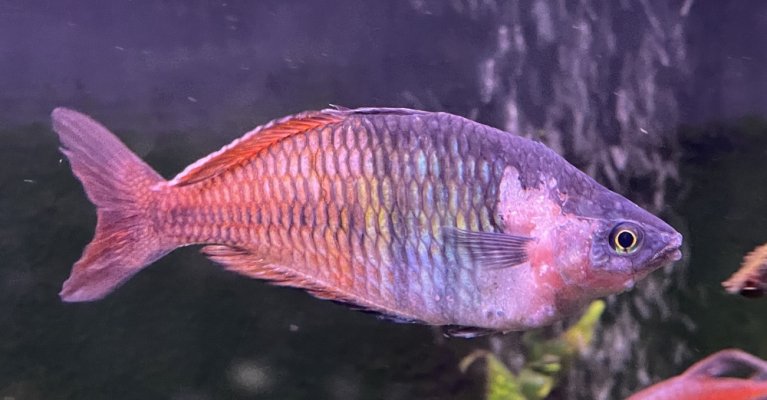JPA
Aquarium Advice Regular
I have an adult male bosemani rainbow that has missing scales around one of its gills, almost like they've been scraped off. You can see it clearly in the picture below. Can anyone tell me if this is an injury or a disease?
Here is some more info:
It has been this way for a few weeks. I keep hoping it will get better but it hasn't improved - if anything it has gotten worse.
It is barely able to move its fin on that side. It spends some time sitting in the left upper corner of the tank but also swims around seemingly normally most of the time.
It is in a well-established 75 gallon tank and I've had the fish for about 2.5 years. There haven't been any recent changes to the tank. Tankmates include three other rainbows (1 male and 2 female), a roseline shark, congo tetras, and some smaller tetras. Filter is Fluval FX6, I do regular water changes, feed flakes + frozen shrimp/bloodworms.
Any help would be appreciated. Thanks so much.
Here is some more info:
It has been this way for a few weeks. I keep hoping it will get better but it hasn't improved - if anything it has gotten worse.
It is barely able to move its fin on that side. It spends some time sitting in the left upper corner of the tank but also swims around seemingly normally most of the time.
It is in a well-established 75 gallon tank and I've had the fish for about 2.5 years. There haven't been any recent changes to the tank. Tankmates include three other rainbows (1 male and 2 female), a roseline shark, congo tetras, and some smaller tetras. Filter is Fluval FX6, I do regular water changes, feed flakes + frozen shrimp/bloodworms.
Any help would be appreciated. Thanks so much.

